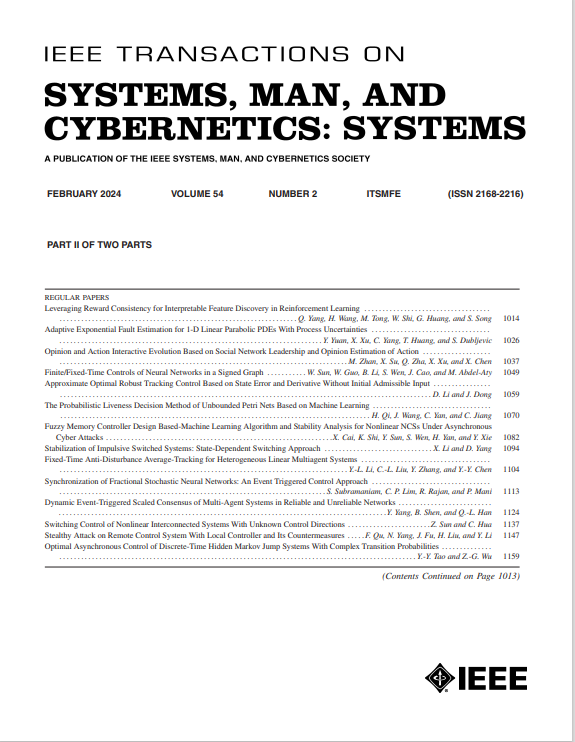Deep Active Learning for Image Hierarchical Classification by Introducing Dependencies and Constraints Between Classes
IF 8.6
1区 计算机科学
Q1 AUTOMATION & CONTROL SYSTEMS
IEEE Transactions on Systems Man Cybernetics-Systems
Pub Date : 2025-04-01
DOI:10.1109/TSMC.2025.3552667
引用次数: 0
Abstract
Deep active learning (DeepAL) extends supervised deep learning to human-machine interactive scenarios with limited annotation budgets. Most existing DeepAL approaches for visual recognition fail to consider the intrinsic hierarchical structure and dependencies between labels. In this article, we propose a unified DeepAL framework for the aforementioned challenge, which fuses three tightly coupled techniques: 1) hierarchical dependency representation entropy (HDRE); 2) approximate class-balanced typical sampling (ACTS); and 3) local probability suppression loss. First, the HDRE provides the features of information entropy, interclass dependencies, and constraints effectively. It is used to determine the query priority of unlabeled samples. Second, the ACTS, embedded with the HDRE, is designed for querying, where the optimal sample query size of each class is derived. It excludes samples near the boundary by employing a well-designed hierarchical margin sampling. Third, the local probability suppression loss is a transfer-friendly loss function that enables the deep model to flatly fit data with a hierarchical structure. It compensates for hierarchical dependencies between classes using the local probability suppression constraint, modeling conditional and unconditional probabilities simultaneously. We conducted experiments on five public image datasets, and the results demonstrated the effectiveness of our approach.引入类间依赖和约束的图像层次分类深度主动学习
深度主动学习(DeepAL)将监督式深度学习扩展到标注预算有限的人机交互场景。大多数现有的深度人工智能视觉识别方法都没有考虑到标签之间的内在层次结构和依赖关系。在本文中,我们针对上述挑战提出了一个统一的DeepAL框架,该框架融合了三种紧密耦合的技术:1)分层依赖表示熵(HDRE);2)近似类平衡典型抽样(ACTS);3)局部概率抑制损失。首先,HDRE有效地提供了信息熵、类间依赖和约束等特征。它用于确定未标记样本的查询优先级。其次,将嵌入HDRE的ACTS设计用于查询,其中派生出每个类的最优样本查询大小。它通过采用设计良好的分层边际抽样来排除边界附近的样本。第三,局部概率抑制损失是一种传递友好的损失函数,使深度模型能够以层次结构平坦拟合数据。它使用局部概率抑制约束补偿类之间的分层依赖,同时建模条件和无条件概率。我们在五个公共图像数据集上进行了实验,结果证明了我们的方法的有效性。
本文章由计算机程序翻译,如有差异,请以英文原文为准。
求助全文
约1分钟内获得全文
求助全文
来源期刊

IEEE Transactions on Systems Man Cybernetics-Systems
AUTOMATION & CONTROL SYSTEMS-COMPUTER SCIENCE, CYBERNETICS
CiteScore
18.50
自引率
11.50%
发文量
812
审稿时长
6 months
期刊介绍:
The IEEE Transactions on Systems, Man, and Cybernetics: Systems encompasses the fields of systems engineering, covering issue formulation, analysis, and modeling throughout the systems engineering lifecycle phases. It addresses decision-making, issue interpretation, systems management, processes, and various methods such as optimization, modeling, and simulation in the development and deployment of large systems.
 求助内容:
求助内容: 应助结果提醒方式:
应助结果提醒方式:


